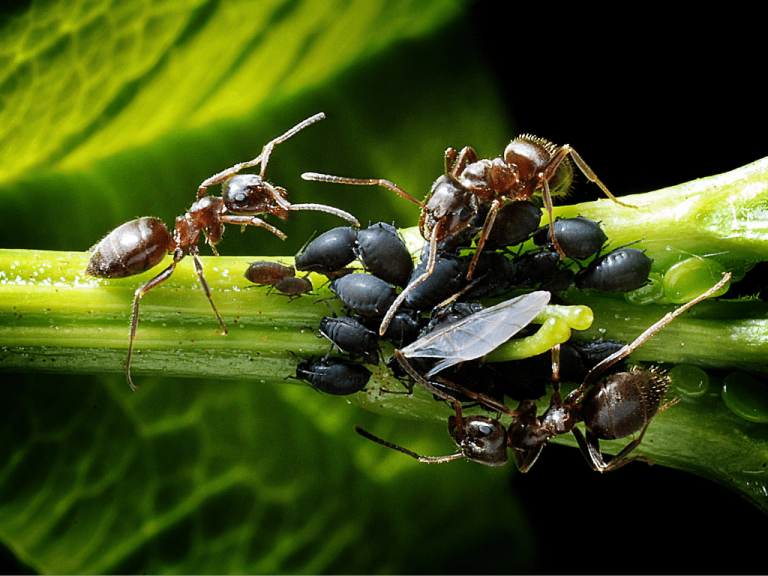Every March, when the weather is warm and the sun is bright, many early spring crops are often infested with clusters of aphids. On these aphid-infested crops, you can also see many ants coming and going, creating a lively scene. Many people believe that the ants are eating the aphids or transporting “food supplies.” In fact, they are “herding cattle” and indirectly harming the crops.
If you look closely, you will see that the ants gently tap the aphids’ abdomens with their antennae. They get along quite well, unlike when ants find a dead fly and carry it home in groups of three or five. After being gently tapped by the ants a few times, the aphids raise their abdomens and excrete a sweet, fragrant “honeydew” (aphids are a type of gluttonous insect that harms various crops by continuously sucking the sap from plants. Besides nourishing their own bodies, a large portion of this sap is excreted from their anus. Since these excretions contain a lot of sugar, they are called “honeydew”), which the ants then enjoy. Therefore, where there are many aphids, there are also many ants.
Moreover, when aphids encounter natural enemies (such as hoverfly larvae, lacewings, and some ladybugs), ants will come to their defense and fiercely attack the aphids’ predators. Thus, you often see many small ants around the aphids, protecting them.
Additionally, when food is scarce on the branches and leaves where the aphids reside, ants will move the aphids to areas with ample food, which is another reason for the abundance of ants.
Since aphids provide ants with “honeydew,” their relationship becomes even closer. Consequently, where there are many aphids, there are also many ants. Interestingly, in winter, the overwintering eggs laid by aphids might be killed by the cold. Ants will collect these “overwintering eggs” and store them in their nests. Sometimes, to prevent the eggs from getting damp, they will bring them out to dry in the sun when the weather is clear and then carry them back underground. When spring arrives the following year, and the young aphids hatch, the ants will carry each young aphid to the plants they prefer to feed on.
The symbiotic relationship between aphids and ants is quite rare in the animal kingdom. Understanding this ambiguous relationship between ants and aphids can help us eliminate aphids by simultaneously taking effective measures to sever their connection.

